Today’s Totem tangle is from Japanese CZT Ayumi Kumazaki, a member of September’s online training seminar CZT41. This is her first tangle on the site.
Ayumi introduces herself and her Metot tangle,
I first encountered Zentangle® art during the Covid-19 epidemic of 2022 when it was difficult to get out and about. I am a nurse. With the Zentangle Method™, I hope to provide a little fun for the frail of heart and the elderly.
This tangle is based on a totem pole. It can be used to draw other tangles within the tangle, or to draw other tangles in the diamond-shaped space between the tangles.
The name of the tangle “METOT” is written backwards from TOTEM.
In this set of tiles Ayumi pairs Metot with Crescent Moon, Diva Dance, Printemps, Tipple, Msst, and Florz.
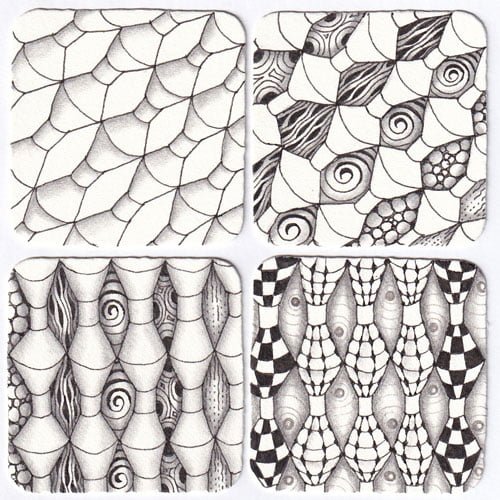
Totem poles and their history are fascinating; there are six basic types, including a “shame pole”. Here’s a brief introduction from Wikipedia and you can read more about the history and cultural significance of totem poles – and the six types – at the link given.
Totem poles are monumental carvings found in western Canada and the northwestern United States. They are a type of Northwest Coast art, consisting of poles, posts or pillars, carved with symbols or figures. They are usually made from large trees, mostly western red cedar, by First Nations and Indigenous peoples of the Pacific Northwest Coast including northern Northwest Coast Haida, Tlingit, and Tsimshian communities in Southeast Alaska and British Columbia, Kwakwaka’wakw and Nuu-chah-nulth communities in southern British Columbia, and the Coast Salish communities in Washington and British Columbia.

Totem: Vancouver, British Columbia, Canada. Image by Dominick Vietor from Pixabay
The word totem derives from the Algonquian word odoodem meaning “(his) kinship group”. The carvings may symbolize or commemorate ancestors, cultural beliefs that recount familiar legends, clan lineages, or notable events. The poles may also serve as functional architectural features, welcome signs for village visitors, mortuary vessels for the remains of deceased ancestors, or as a means to publicly ridicule someone. They may embody a historical narrative of significance to the people carving and installing the pole. Given the complexity and symbolic meanings of these various carvings, their placement and importance lies in the observer’s knowledge and connection to the meanings of the figures and the culture in which they are embedded.
Ayumi’s simple deconstruction of Metot is clever and is a reminder that it’s often good to begin a tangle in the middle of a section and work your way outwards. After I added a wee embellishment my Metot example ended up resembling spools of thread but there are many, many ways to scale, embellish or fill Metot and I’m sure you’ll have fun discovering a few.
Ayumi illustrates the step-by-step instructions for drawing Metot below and she pairs it in a beautiful Zentangle tile with Knightsbridge, Flux and orbs.
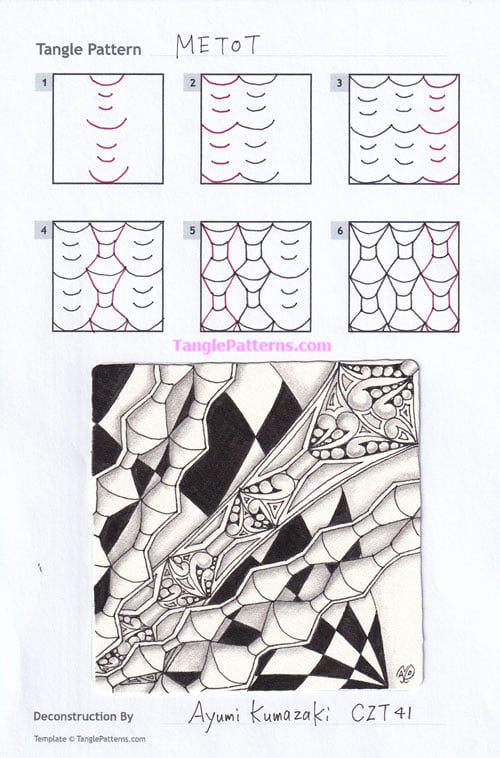
Image copyright the artist and used with permission, ALL RIGHTS RESERVED. These images are for your personal offline reference only. Please feel free to refer to the images to recreate this tangle in your personal Zentangles and ZIAs. However the artist and TanglePatterns.com reserve all rights to the images and they must not be publicly pinned, altered, reproduced or republished. (Small side note: if you look at the legalese in Pinterest, you are legally responsible for obtaining permission to post every photo that gets ‘Pinned’. Giving credit or sharing the source link doesn’t count.) Thank you for respecting these rights. “We must all face the choice between what is right and what is easy.” ~ Albus Dumbledore
As you enjoy any of the tangles on the site, please leave a comment of thanks and encouragement to show the artists you appreciate them for sharing their creativity to inspire yours. Your thanks helps motivate them to continue to share! And please share a link to your favorite tangles on social media. Thanks!
Check out the tag ayumik for more of Ayumi’s tangles on TanglePatterns.com.
.oOo.
Share your tangle on TanglePatterns
Everyone is invited to share patterns on TanglePatterns.com, you do NOT need to be a CZT. In order for patterns to be considered for publication they must be submitted to me by email. In other words you have to let me know about them.
For a submission to qualify as a tangle it must be a genuine pattern (“a regularly repeated arrangement, especially a design made from repeated lines, shapes, or colours on a surface”) and not the repetition of “a thing to draw”.
From The Book of Zentangle:
“Keep it Non-representational. Zentangle artwork is intended to be non-representational. Zentangle’s elemental strokes are also non-representational.
We don’t teach complex elements such as hearts, stars or flowers. Tangles are also non-representational.”
Remember that tangles never start with pencil planning.
"A tangle has no pre-planning with pencil guidelines, grids or dots, no erased lines."
If you need a refresher on what makes a tangle, read the A PATTERN IS NOT ALWAYS A TANGLE page on the ZENTANGLES menu bar at the top of any page.
For details on how to submit your pattern for consideration visit the SUBMIT YOUR PATTERN page on the top menu bar of any page on the site. On that menu you will find these two pages:
The first page includes instructions on how to prepare and send your JPGs. (Please save me time and do not send PDFs.) It also includes a link to this PDF submission form.
When your examples include additional tangles from the site, please list them in your email. (This saves me time and my memory some wear and tear.)
If your pattern is posted on your blog, attach your steps and tile JPGs to your email and be sure your email includes the direct URL so I can link to it.
And remember, to quote Zentangle's co-founders Rick and Maria: tangles should be "magical, simple and easy to create", non-objective patterns of repetitive strokes that are easy to teach and offer a high degree of success to tanglers of all ages.
"Keep the tangles as little like 'drawing something' as possible."
.oOo.
Related Links
- Looking for tangles by Artist or Type? For details visit the ABOUT > HOW TO FIND TANGLES BY ARTIST OR TYPE page on the top menu bar of any page on the site.
- What is a Zentangle? — if you are new to the Zentangle Method, start here for the fundamentals.
- Zentangle terminology — a glossary of terms used in this art form.
- How to use the site — an excellent free video tutorial showing how to use the site as well as pointing out lots of useful features you might have missed.
- Linda's List of Zentangle-Original Patterns — here is the complete list of original tangles (aka "official tangles") created and introduced by founders Rick Roberts and Maria Thomas, including those not published online. If you are new to the Zentangle Method I highly recommend learning a few of the published Zentangle classics first.
- "A Zentangle has no up or down and is not a picture of something, so you have no worries about whether you can draw a hand, or a duck. You always succeed in creating a Zentangle." Patterns that are drawings of a recognizable naturalistic or actual object, figure, or scene, are not tangles. A pattern is not always a tangle — here's what makes a tangle. TIP: tangles never start with pencil planning.
- Un motif n’est pas toujours un tangle — Qu’est-ce qu’un tangle ?
- Un diseño no es siempre un tangle — ¿Qué es un tangle?
- How to submit your pattern deconstruction to TanglePatterns
- For lots of great FREE tutorials on TanglePatterns, click on the TUTORIALS link in the pink alphabetic menu bar below the tangle images at the top of any page.
- Strings! Have we got STRINGS! Click on the STRINGS link in the pink alphabetic menu bar below the tangle images at the top of any page for 250 different (free) Zentangle-starters. More than enough for any lifetime!
- Never miss a tangle! FREE eMAIL NEWSLETTER - visit the Here's how to SUBSCRIBE button (top of left sidebar on any page) and sign up to get notices delivered free to your inbox.
- If you have questions about the TanglePatterns.com TANGLE GUIDE, visit the BOOK REVIEWS tab on the top menu bar of any page on the site for COMPLETE details!
|
.oOo. |
|
Enhance your Zentangle experience while supporting TanglePatterns: |
|
CURRENT EDITION! TanglePatterns.com TANGLE GUIDE, 2025 Edition |
|
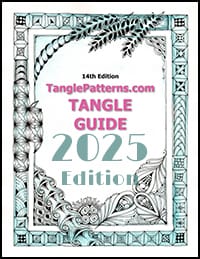 |
The 14th Edition of the TanglePatterns.com TANGLE GUIDE is an instant-download 117-page interactive digital eBook/PDF containing over 2,000 tangles on the site from May 2010 through December 31, 2024. It's a great resource and a must-have digital tool for using the site. Visit the STORE > E-BOOKS page and help keep TanglePatterns.com going by getting your copy now! |
|
"Linda, Thank you! I was relying on too few and getting stuck after 3 years of daily working with Zentangle. This has inspired me to ‘begin again’ with renewed excitement." ~ Barbara R. |
|
| See the BOOK REVIEWS page for more details on its features and view a sample page. Note: this is a digital product you download immediately when you place your order, nothing will be physically mailed to you. | |
| If you're new to Zentangle® and tangling, my TanglePatterns.com BEGINNER'S GUIDE TO ZENTANGLE is just what you need to get started. Also available en Français and en Español. | |
|
|
|
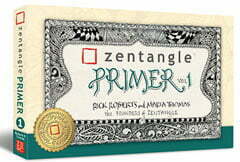 |
This is the only Zentangle book you'll ever need: the fabulous Zentangle PRIMER Vol 1. It's your CZT-in-a-book by the founders of Zentangle®. Visit the STORE tab on the top menu bar or click on the image. For more about the content and to read the rave reviews, visit the BOOK REVIEWS tab. |
| Now available in KINDLE format for $9.99. Spanish Edition here. Japanese Edition here. | |
| "Absolutely the best Zentangle Book yet! As an accomplished artist I used to think I did not need instruction on this art form. How wrong I was! My tangling improved by leaps and bounds after reading this book. If you think you have Zentangle down then you need this book more than ever!" ~ Kris H | |
|
|
|
|
.oOo. |
|


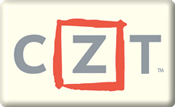






The initial tangle is so simple looking. But, when you see what can be done with it. WOW What a lot of possibilities. Thank you for this one.
To Deborah
Thank you for your comment.
Please try finding various arrangements?
This is type of tangle that dances and shifts before my eyes. I will have loads of fun with it. Thank you.
To Susan
Please enjoy METOT!
Thank you!
How wonderful to have a new first tangle published on the site! Congrats Ayumi!! I am having a lot of fun playing with Metot and seeing all the ways in which I can add it to my tiles <3
To Jenn Brayton CZT36
Thank you for your comment.
I’m grad to receive such a warm comments.
So many possibilities with this one. Thanks for sharing.
To Sue Lesle CZT
Thank you!
Please enjoy METOT!